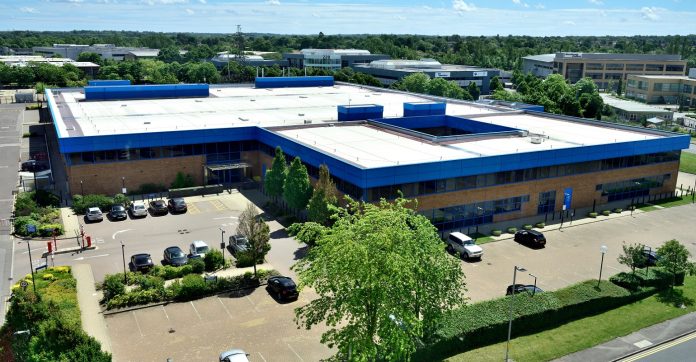If you were to ask someone to list the most interesting parts of a data center, the roof would probably not make the cut. Data center roofs tend to receive much less attention than topics like HVAC solutions, server rack technology, and power systems.
But the fact is that roofs can play a pivotal role in shaping data center operations. They affect the energy efficiency of many data center facilities, and they’re also important for helping to protect data center assets against natural disaster.
That’s why data center roofing is a hotter topic in the industry than you might think. Keep reading for a look at the latest data center roofing concepts and what they mean for data center sustainability, reliability, and more.
Why Are Roofs Important in Data Centers?
The role of roofs in data centers amounts to more than just keeping rain out and shielding equipment from direct sunlight. Roofing design, material, and construction techniques also impact data centers the following ways:
- Energy efficiency: Roofs that are lighter in color reduce the amount of heat that data centers absorb from the sun, which in turn reduces the energy spent on cooling data centers. Sloped roofs can also reduce solar energy absorption compared to flat roofs.
- Resilience against natural disasters: During periods of extreme weather — like hurricanes and tornadoes — a well-designed and well-constructed data center roof stands a better chance of keeping equipment safe and operational.
- Cost: The roof is one of the more expensive parts of a data center facility to build and maintain. That means that roof construction and material decisions can impact the overall cost of building and operating a data center.
- Usable space: Roofs capable of supporting the necessary loads can be a convenient place to locate HVAC compressors and other equipment that data centers depend on — especially for data centers located in places (such as city centers) where open land adjacent to data center facilities is in short supply.
Unfortunately, it’s impossible to design a data center roof that caters to each of these priorities equally. A sloped roof might improve energy efficiency, for example, but it will also make it much harder to place HVAC equipment on top of the data center. Likewise, a roof constructed to survive extreme weather events will help protect data center assets, but it will also increase data center costs.
For data center operators, then, the challenge is figuring out which approach to roofing provides the greatest benefits at the lowest costs, based on the operators’ priorities.
Types of Data Center Roofs
When planning a roof for a new data center facility — or, in some cases, when replacing a roof on an existing facility — companies that own data centers have several options from which to choose.
The conventional approach is to construct a low-sloped roof and finish it using built-up roofing, or BUR. BUR is a type of roofing that uses layers of asphalt to waterproof a roofing surface. This is typically the most inexpensive type of data center roof, but it’s not very energy-efficient or resistant to extreme weather.
An alternative to the BUR approach for low-sloped roofs is to cover them with ethylene propylene diene monomer, or EPDM. EPDM is less prone to leaking during heavy rain than BUR, but it’s not reflective, so it’s not a particularly energy-efficient roofing solution. It is possible to coat EPDM membranes with reflective paint to improve energy efficiency, however.
Metal roofs for data centers are more expensive to install, but they offer greater durability and reflect sunlight. They can also support heavier loads, making them advantageous if you want to place HVAC equipment on the roof.
For data centers with sloped roofs, a variety of roofing materials can be used, ranging from the traditional asphalt shingles commonly installed on homes to concrete tiles. Thus, sloped roofs offer more versatility when it comes to roofing materials — and therefore make it easier to select materials that optimize energy efficiency, if that is a priority. The downside is that sloped roofs are more expensive to build, and, as noted above, they rule out the possibility of placing any type of large equipment on top of the roof.
If you want to be truly cutting-edge, consider covering your data center roof with plants. The roof will be green literally and figuratively because you’ll be covering it with organic material that will help reduce solar energy absorption. That said, the value that planted roofs offer from a sustainability perspective is largely symbolic: The EPA says that green roofs reduce energy consumption by only 0.7% compared with traditional roofs.
Also, green roofs may not be as resilient during extreme weather because the planted surface may blow off during high winds, although proper design can mitigate this issue.
Conclusion
The bottom line when it comes to data center roofs is that there’s no single type of roof that is best. The right data center roof depends on what data center operators want to prioritize — such as cost-effectiveness, energy savings, or resilience during extreme weather events.
www.datacenterknowledge.com
https://www.datacenterknowledge.com/design/data-center-roofs-play-vital-role-cost-efficiency-sustainability-and-resilience















